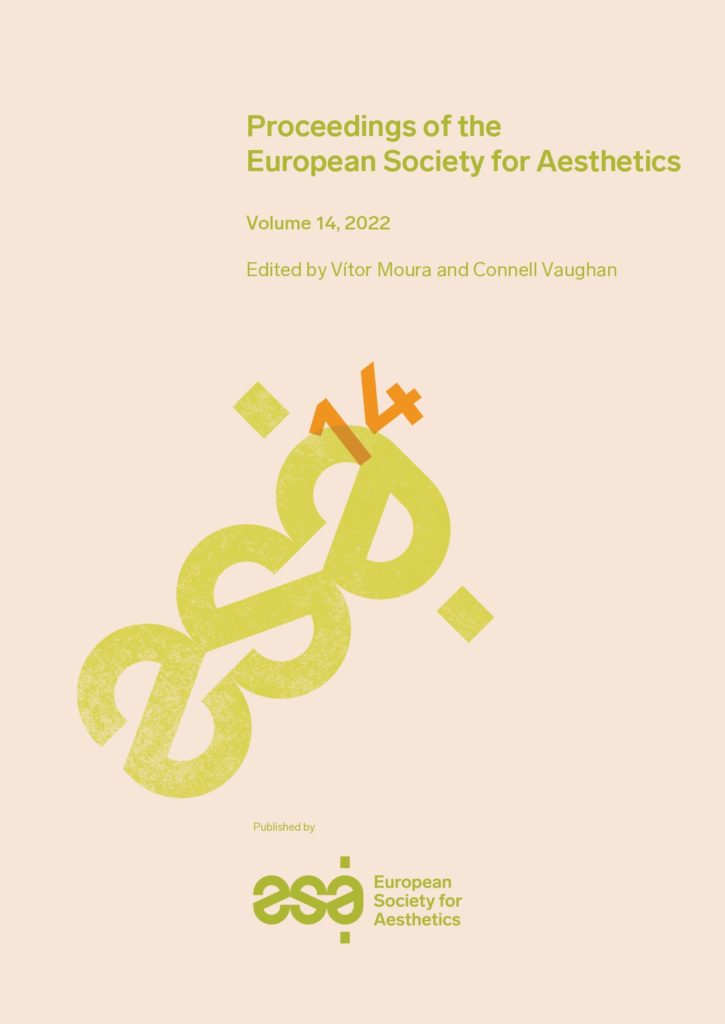| Hassan Ali |
Rosebud: Exploring Deleuzian Temporality through the Wellesian Shot |
1-13 |
| Sacha Behrend |
On the Apparent Incompatibility of Perceptual and Conventional Accounts of Pictures |
14-27 |
| Anu Besson |
On Aesthetic Practices and Cultural Identity of Finish Emigrants |
28-37 |
| Pol Capdevila |
Mood in Cinema. Towards a Unified Form of Time |
38-55 |
| Jokob Deibl |
From Infinite Rapprochement to the Open: From Kant to Hölderlin |
56-67 |
| Viviana Galletta |
The Laocoön and the Devil: A Path through the Franciscus Hemsterhuis’ Letter on Sculpture |
68-85 |
| Lorenzo Gineprini |
The Uncanniness of the Ordinary: Rethinking the Uncanny within Aesthetics |
86-99 |
| Jason Holt |
Self-Referential Aesthetics in the Art of Leonard Cohen |
100-111 |
| Mariliis Elizabeth Holzmann |
An Alien Phenomenology of Object Oriented Aesthetics and Genderqueer Representations in Julia Ducournau’s Titane |
112-127 |
| Daniel Kuran |
From Ethics to Aesthetics: On an Aesthetic Sense in Kant’s Philosophy of Religion |
128-133 |
| Salvador Rubio Marco |
Can Poems do Philosophy?: the Philosopher as a Sportsman of the Mind |
141-150 |
| Philip Mills |
Wanting Austin Inside Out: Viral Poetics and Queer Theory |
151-165 |
| Eva Schürmann |
“A Real Fact is a Fact of Aesthetic Experience.” On the Actuality of Whitehead’s Aisthetics |
166-182 |
| Thomas Symeonidis |
Designing Worlds: Explorations of the Possible Structures of the Aesthetic in Jacques Rancière |
183-188 |
| Asmus Trautsch |
Transformation and Transcendence of the Tragic: Milo Rau’s “Theatre of the Real” |
194-217 |
| Elettra Villani |
The Category of the Aesthetic: Considerations on Theodor W. Adorno’s Reading of Kierkegaard |
218-228 |
